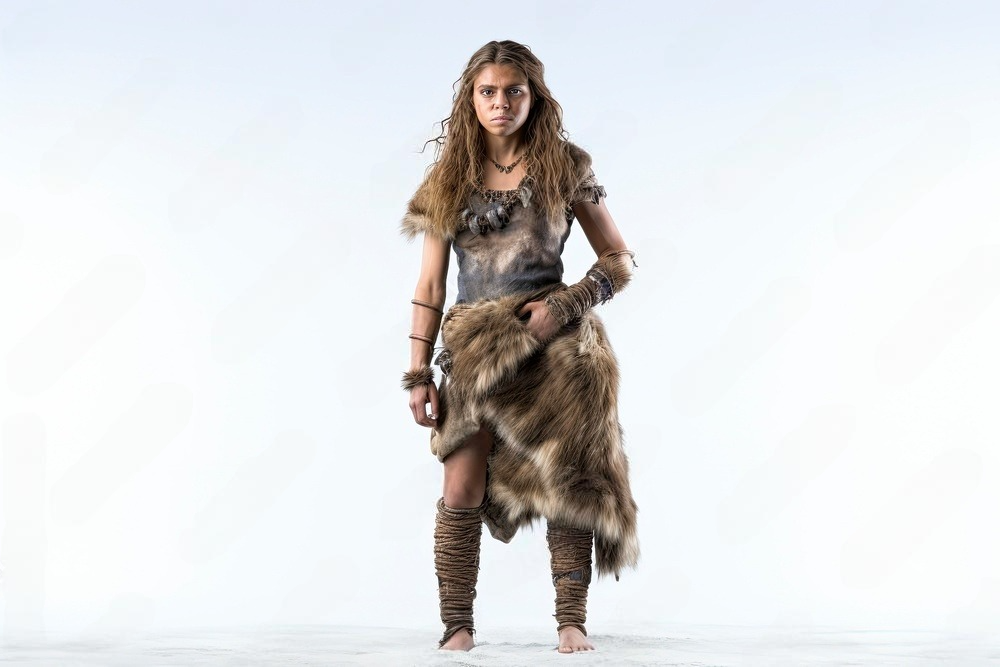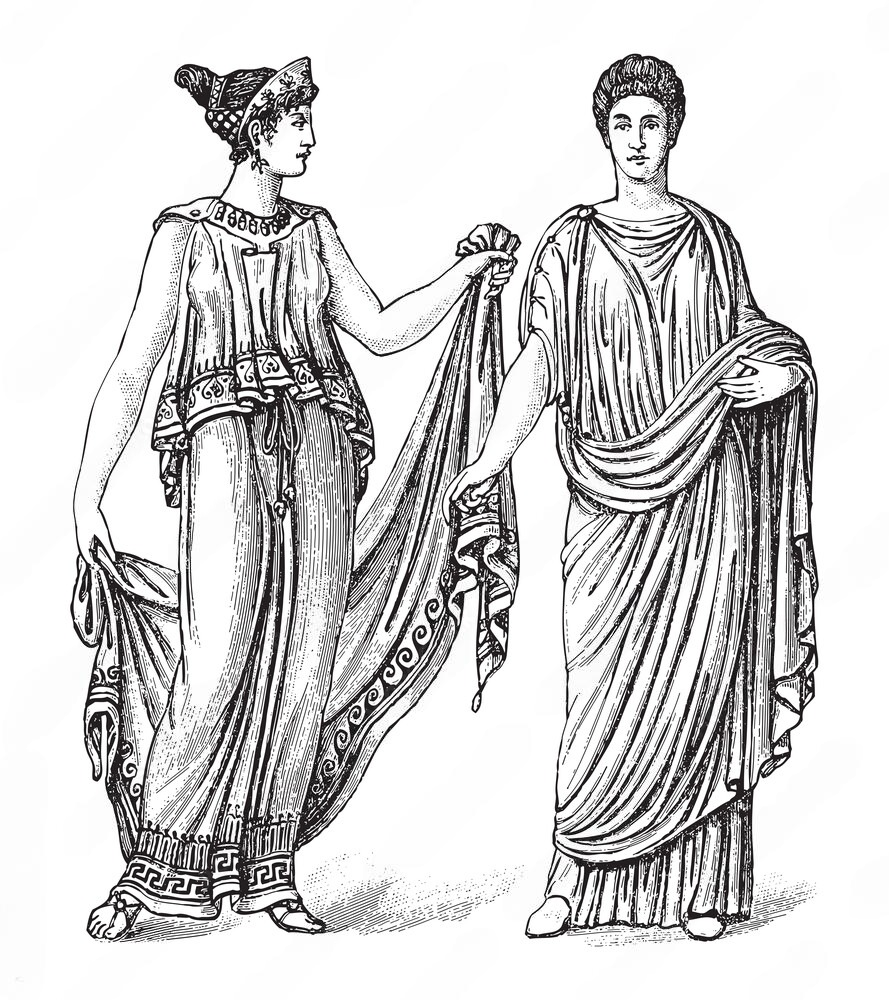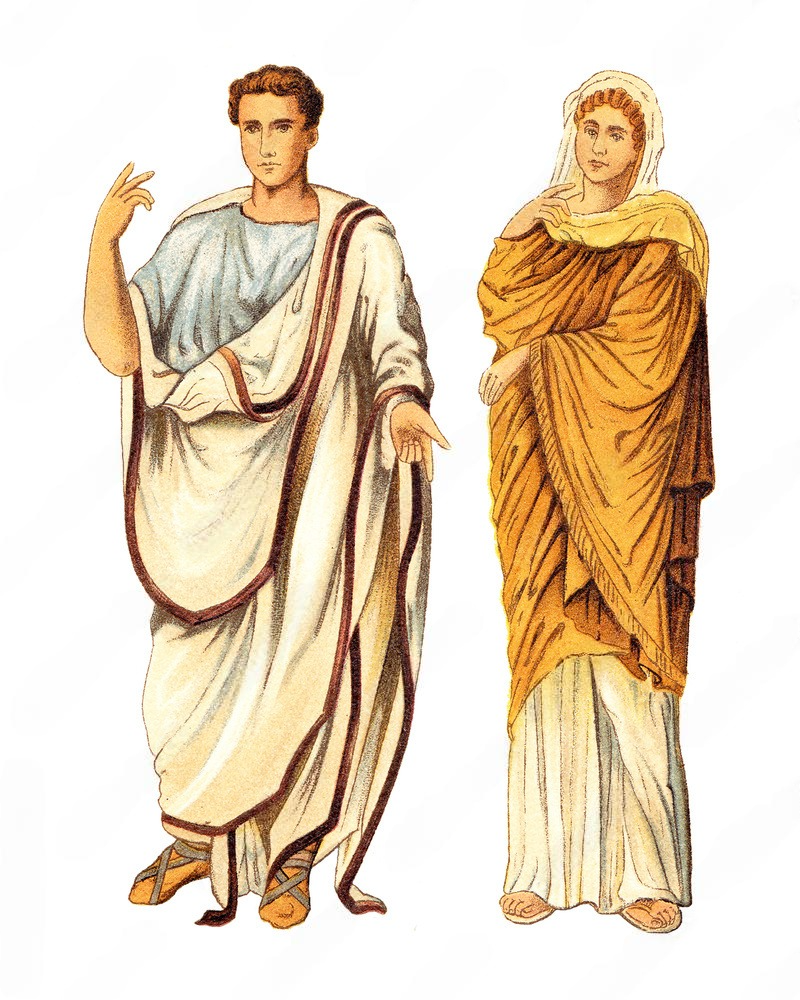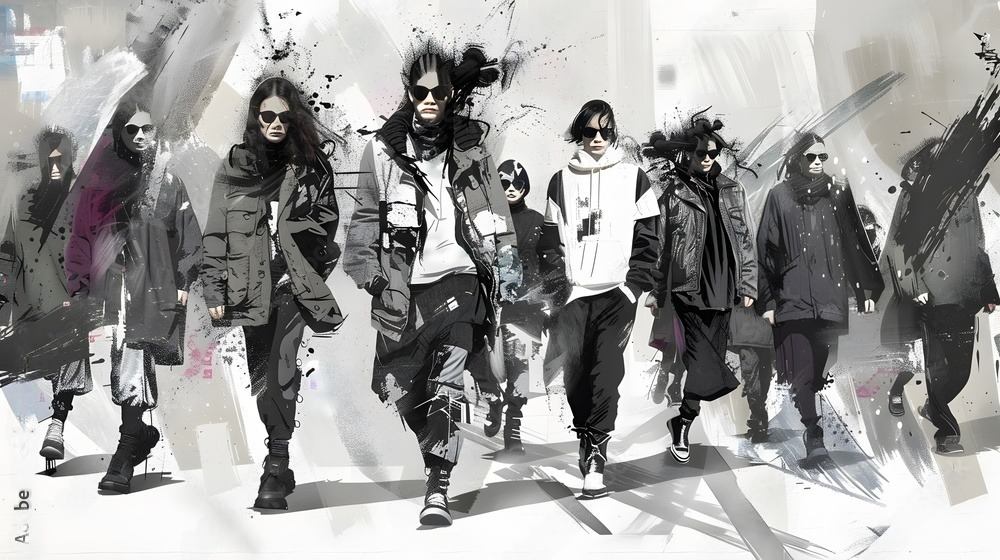This is a post all about the revolutionary fashion history timeline in style.
“Fashion” is a seven-letter word that has been traveling for thousands of years and woven the threads of time so elegantly. This seven-letter word holds the power of unleashing the revolutionary fashion history timeline in style and curating a golden manuscript. Fashion is such a word that has no absolute period, nation, race, culture, generation, ethnicity, or class. Rather every one of them is influenced by fashion in one way or another. But what is this fashion? What is the specialty of this?
Well, “ Fashion” is you. Fashion defines who you are and what your root is. It is not something that can be defined by the book. It is not only the way of dressing up or styling yourself in beautiful, trendy clothing. It also defines your behavior, attitude, etiquette, lifestyle, and culture. As Coco Chanel said-
“I don’t do fashion. I am fashion.”
So, don’t let fashion overwhelm your personality. Allow your true self to be reflected in your style choices.
Table of Contents
Threads Through Time: Decoding the Revolutionary Fashion History Timeline in Style
Now, have you ever wondered if fashion has remained unchanged throughout history? The answer is “No.” Fashion has not always remained constant throughout history. Fashion has undergone a remarkable transformation, evolving into its present sophisticated and contemporary iterations. Looking back to the past can provide insights into how fashion used to be. Now let’s begin by unleashing the revolutionary fashion history timeline in style, from ancient times when it was deemed a necessity to the modern era where fashion serves as a means to express one’s personality. Throughout history, fashion has evolved across different nations, cultures, and individuals. It is a dynamic rather than a static phenomenon, and we are about to explore the fascinating journey of fashion history here.
Decoding the Fashion of Early Humanity: Prehistoric Era
Imagine a world devoid of fashion runways, Instagram influencers, and high-end boutiques—a world where early humans navigated their existence not only through survival instincts but also through the art of clothing. In this exploration of the prehistoric era, we delve into the intriguing and complex tapestry of early human fashion, decoding the revolutionary fashion history timeline in the style of threads that connected our ancestors to both practicality and symbolism.

Paleolithic Wardrobe: Necessity and Ingenuity
The Paleolithic era, often referred to as the Stone Age, spanned from approximately 2.6 million years ago to around 10,000 BCE. During this period, humans developed a remarkable level of adaptability, especially when it came to their wardrobes.
Animal Hides and Fur
In the Paleolithic era, fashion was a raw expression of necessity and ingenuity. Our ancestors, living in harmony with nature, turned to animal hides and fur for their clothing needs. These materials weren’t just garments but a testament to humanity’s ability to adapt and thrive in the harshest environments. Bone needles served as the stitches binding together the fabric of survival. Each garment was a masterpiece of ingenuity, a tailored response to the challenges of a bygone era.
Earth Tones and Natural Hues
The Paleolithic color palette was a reflection of the natural world. Earthy tones, subdued browns, and muted greens dominated, mirroring the surroundings from which these early humans drew their inspiration. Nature’s hues, extracted from plants and minerals, adorned Paleolithic garments, creating a monochromatic yet harmonious ensemble. This is an era where style meets survival in the most primal sense.
Mesolithic Wardrobe: Beyond the Surface
The Mesolithic period, which bridged the gap between the Paleolithic and Neolithic ages, was a crucial moment in human history. Occurring around 10,000 BCE to 8,000 BCE, it brought about significant changes in tool technology, social structures, and clothing.
Skins, Textiles, and Adornments
During this time, there was a continuation of utilizing animal hides for clothing; however, there were also explorations with textiles made from plant fibers such as flax and nettles. These fibrous plants enabled the creation of lighter and more breathable fabrics compared to the heavy hides used during the Paleolithic era. With advancements in tools like finer bone needles came improved tailoring techniques among Mesolithic people. This led to intricately crafted garments with tailored fits that not only served practical purposes but also showcased an increasing awareness of aesthetics.
Mesolithic Color Palette: Nature’s Hues
In the Mesolithic era, the color palette was a reflection of the surrounding environment. Earthy tones dominate, with shades of browns, greens, and ochres taking center stage. Mesolithic communities utilized natural dyes extracted from plants to imbue their garments with these hues, creating a harmonious blend between fashion and nature. Though ancient, this period was not devoid of style and innovation.
Neolithic Wardrobe: Craftsmanship and Innovation
The Neolithic era, which began around 7000 to 17000 B.C.E., represents a crucial period in human history where remarkable progress in various areas reshaped societies. Among these changes, the development of clothing stands out as proof of human creativity and skill.
Flora and Fauna in Fabric
The Neolithic period witnessed a remarkable leap in craftsmanship and innovation, reflected in the choice of materials for clothing. Animal hides continued to be a staple, but the Neolithic people elevated their craft by experimenting with new techniques. Advanced tanning methods led to softer, more pliable leather, allowing for the creation of fitted garments that showcased an understanding of form and function.
In addition to hides, Neolithic communities harnessed the power of plants to weave textiles. The introduction of woven fabric from plant fibers marked a significant advancement, providing a more diverse range of textures and patterns in clothing. A significant innovation in Neolithic wardrobes was the creation of the loom, which allowed for efficient weaving that resulted in more intricate and durable textiles.
Adornments and Personal Expression
Neolithic fashion wasn’t merely about covering the body; it was a form of personal expression. Adornments took on new dimensions, with intricate beadwork, shell jewelry, and bone ornaments becoming staples of Neolithic attire. Each piece carried symbolic significance, offering a glimpse into the beliefs and values of a burgeoning society.
Natural Dyes and Symbolic Hues
The Neolithic color palette echoed the earthy tones of its predecessor, the Mesolithic era, yet with subtle variations. Neolithic communities continued to utilize natural dyes, extracting pigments from plants and minerals. However, a broader spectrum of colors emerged, introducing richer hues that symbolized the evolving cultural landscape. Every outfit that was worn in this period symbolized their lifestyle and beliefs rather than covering the human body and expressing their personality.
In the 21st century, echoes of prehistoric fashion persist. Designers draw inspiration from ancient styles, reviving elements of the past in contemporary clothing. The cyclical nature of fashion demonstrates a timeless connection to our roots. Unleashing the revolutionary fashion history timeline in the style of early humanity reveals a rich tale of survival, symbolism, and self-expression. The garments worn by our ancestors were more than mere coverings; they were cultural artifacts, reflecting the evolution of societies and the creative spirit inherent in humanity.
Unveiling the Elegance of Ancient Civilizations’ Fashion History
In the vast tapestry of time, the threads of fashion have been woven through the fabric of civilizations, leaving a legacy of elegance and cultural significance. From the majestic attire of ancient Egyptians to the intricacies of Roman togas, the fashion of bygone eras is a window into the societal norms, artistic expressions, and craftsmanship that defined each civilization. Let’s embark on a journey to decode the fashion history timeline in style through the corridors of history, unveiling the timeless elegance of ancient civilizations’ fashion history.
The allure of Ancient Egyptian: Attire Fit for Royalty
The evolution of fashion was revolutionized during ancient Egyptian civilization. In the Early Dynastic Period, men and women from lower classes wore simple knee-length kilts in neutral colors due to expensive dyes. These were typically made from breathable fabrics like cotton, linen, or flax and cinched at the waist with cloth belts or ropes. Meanwhile, upper-class Egyptians opted for more colorful and ornate attire. Women’s clothing varied between social classes: elite women donned figure-hugging dresses with varying sleeve lengths, while those of lower status wore waist-to-knee skirts without a top.
In contrast, during Egypt’s Middle Kingdom Era, there was a shift towards long cotton gowns for women, along with changing hairstyles. The New Kingdom brought about even more intricate styles; women adorned themselves in sheer linen gowns paired with sashes or capes along with headpieces, necklaces, and earrings that stood out as elegant fashion statements.
Men’s clothing also experienced advancements during this period; their embroidered kilts extended below the knees while being complemented by loose-fitting blouses made from lightweight fabric such as sheer linen. Royalty and upper-class individuals expressed affinity towards this style by accessorizing it further through nemesis headdresses along with sandals or slippers.

Symbolism in Every Stitch: Colors and Patterns
The fashion of ancient Egyptians was rich in symbolism, where colors and designs conveyed deeper meanings. White represented purity and simplicity and was commonly worn as everyday attire. On the other hand, bright colors like vivid blues, reds, and yellows were reserved for special occasions to reflect the lively nature of Egyptian life. Additionally, patterns such as stripes and chevrons held symbolic significance beyond their aesthetic appeal; for instance, stripes symbolized order and balance, portraying the harmonious equilibrium sought after by the Egyptians in their daily lives.
Adornments Fit for Eternity: Jewelry and Accessories
No fashion is complete without a dazzling array of jewelry and it was “Gold”. The metal “Gold” is considered the flesh of the gods to design necklaces, bracelets, earrings, and rings intricately and adorned by the wearer, reflecting not only wealth but also a connection to the divine. Wigs, made from human hair or plant fibers, were popular accessories, especially for those who couldn’t boast a luxurious natural mane. They were not only a symbol of beauty but also served practical purposes, protecting the head from the scorching sun.

The garments of ancient Egypt were not just fabrics draped over the body; they were cultural artifacts, weaving a narrative of a society that valued style as an integral part of daily life. As we journey through the annals of ancient Egyptian fashion, we discover a civilization that elevated clothing beyond mere necessity, infusing it with symbolism, artistry, and divine significance. The garments of ancient Egypt were not just fabrics draped over the body; they were cultural artifacts, weaving a narrative of a society that valued style as an integral part of daily life.
Unraveling the Timeless Charm of Ancient Greek Fashion: Attire Fit for the Gods
Journey back to the origins of Western civilization with us, where fashion in ancient Greece was more than just clothing. It was a testimony to artistic expression, democratic values, and divine inspiration. In exploring Ancient Greek fashion, let’s dive into the draped sophistication and symbolic importance that not only revealed the revolutionary fashion history timeline in style but also adorned the people of city-states such as Athens and Sparta.

The Chiton and the Peplos: Draped Elegance
At the heart of Ancient Greek fashion were the chiton and the peplos, simple yet iconic garments that epitomized classical elegance. The chiton, a rectangular piece of fabric fastened at the shoulders, graced both men and women. The peplos, worn primarily by women, was a longer garment draped and pinned at the shoulders, creating a timeless silhouette. The choice of fabric varied, with wool being common for colder seasons and linen for warmer climates. The simplicity of these garments allowed for freedom of movement—a reflection of the Greek emphasis on physical prowess and civic engagement.
Colorful Togas and Himations: A Spectrum of Symbolism
Despite the dominance of simple everyday clothing, more intricate garments emerged for special occasions. The toga in Ancient Greece was not as common as in Ancient Rome but carried significant meaning during ceremonies and formal gatherings. Lavishly dyed and elegantly draped, these garments represented status and civic responsibility.
Similarly, the Himation, a large outer garment worn like a long cape or cloak by both genders, consisted of straightforward cloth squares, cylinders, or rectangles that were wrapped or draped around an individual and then secured with pins, buttons, or brooches. While the attire of the upper class featured bright colors mainly at the borders, only wealthy individuals could afford dyed clothes adorned with patterns and weights at their hems to ensure secure draping across their bodies.
Adornments of the Gods: Jewelry and Accessories
Jewelry was significant in the Ancient Greek style, often representing wealth, status, and spiritual beliefs. Elaborate gold jewelry like earrings, necklaces, and bracelets were worn by both men and women. Olive wreaths symbolizing peace and victory were used for special occasions, while champions of athletic competitions received laurel wreaths. Sandals were the usual footwear choice, with varying styles from simple open-toe designs for everyday use to more intricate laced versions for special events.
Draping Beauty: Makeup and Grooming
The pursuit of beauty in Ancient Greece included grooming practices. Women favored a simple appearance, highlighting natural features and preferring a pale complexion. They used natural ingredients to create rouge for a touch of color, while both men and women used scented oils and perfumes.
The influence of ancient Greek fashion on present-day trends lies in its simplicity in unveiling the revolutionary fashion history timeline in style that accentuates natural human features. The more we go through ancient Greek fashion, we encounter a society that values not only physical prowess and civic duty but also the artistry woven into everyday attire
Timeless Elegance: Exploring the Splendor of Ancient Roman Fashion
The fashion of ancient Rome was shaped by the garments of the Greeks, integrating them into a representation of social status, hierarchy, and cultural identity. The attire varied in color and richness, accentuating divisions among social classes. Fashion materials such as silk from China and cotton from India were imported for clothing production.

Togas and Tunics: Symbols of Citizenship
The toga, a distinctive garment worn in Ancient Rome, was not just a piece of clothing but also an emblem of Roman citizenship. It came in various styles and colors; the pure white one signified manhood, while magistrates and young boys wore togas with purple borders. Both men and women donned tunics under their togas, with variations that conveyed social status—senators and aristocrats exhibited unique designs as indicators of their standing.
Stolas and Pallas: Women’s Elegance
The Roman women’s attire closely resembled the Greek style, with the equivalent of the chiton being called a “stola”. Over time, women began layering multiple garments made of more luxurious fabrics and adorned with elaborate decorations. The female cloak, known as the “palla”, bore a resemblance to the Greek himation.
Military Influence: Practicality and Symbolism
The design of certain tunics was inspired by Roman military attire, such as the lorica segmentata (segmented armor). Additionally, generals and emperors wore the paludamentum, a red cloak that symbolized authority and power.
Footwear and Accessories: From Sandals to Signet Rings
Sandals made of leather were the preferred footwear in Ancient Rome, serving both men and women. The design of sandals could signify social status, with distinct styles worn by senators. Additional accessories also held importance; men frequently wore signet rings for sealing documents, while women adorned themselves with rings and decorative hand fans, blending style and functionality seamlessly. The fashion of ancient Rome showcases not only the sophistication and allure of their way of life but also reflects their art, architecture, and culture, which extended far beyond their borders.
Personal Grooming: A Roman Affair
In Ancient Rome, personal grooming was a meticulous affair. Both men and women indulged in bathing rituals, using oils and fragrances. The use of cosmetics was prevalent, with women applying lead-based foundation and enhancing their features with kohl for a striking appearance.
The fashion of ancient Rome showcases not only the sophistication and allure of their way of life but also reflects their art, architecture, and culture, which extended far beyond their borders.
In unraveling the elegance of ancient civilizations’ fashion history, we discover more than just garments; we unveil the essence of cultures, the evolution of societies, and the creativity of humanity. Each civilization’s fashion narrative adds a unique chapter to the collective story of human expression by creating a revolutionary fashion history timeline in style.




